Welcome to Shibamata, the most nostalgic neighbourhood in Tokyo.
In fact, Shibamata’s nostalgic nature was pretty perfect for my first full day in Japan, because I felt like I was stuck in something of a time warp myself.
For those who don’t know, the direct flight from London to Tokyo takes twelve hours and crosses nine timezones. By the time I landed, I was in a state of delirium – and the bright lights and street-side chaos of central Tokyo only exacerbated my condition!
But when you’ve just arrived in Japan, there’s no time to waste. So the next morning, still jet lagged and unsure of what time my body thought it was, I jumped on a succession of subway trains, switched to a tiny above-ground carriage and stepped off at a platform marked by a beautifully classic hand-lettered sign. We’d arrived in Shibamata.
What should I know about Shibamata, Tokyo?
Shibamata is a neighbourhood in Katsushika Ward which is in the eastern part of Tokyo – an area pretty far away from the usual tourist routes, or so I was told. In Japan, Shibamata is most famous for being the hometown of the protagonist in an old Japanese film series called ‘Otoko wa Tsurai yo’ – in English, ‘It’s Tough Being a Man’. Filmed from 1969 to 1995, the series starred a man called Kiyoshi Atsumi who plays Tora-san, “a kind-hearted vagabond who is always unlucky in love”.
Although Tora-san travelled the length and breadth of Japan in his films, he always returned to Shibamata, where his sister, aunt and uncle lived. It gave Shibamata a lot of media exposure, and cemented the area’s reputation as a traditional neighbourhood emblematic of ‘old Tokyo’.
And as for Tora-san himself? Well, he’s become the mascot of Shibamata. When we stepped off the train, walked across the tracks and exited Shibamata station, the first thing we saw was the bronze statue of Tora-san, his hand outstretched towards another statue of his younger sister.

[Image via Flickr]
Pin me for later!
Walking down Taishakuten Sando street
The central street in Shibamata, known as the Taishakuten Sando, is just 200 metres long but immediately evokes an old-world charm which is hard to find in modern-day Tokyo. It leads visitors directly from Shibamata station to the famous Taishakuten temple and is lined with shops selling all kinds of local specialties: traditional street food including doriyaki pancakes, Japanese crackers and sweet rice dumplings flavoured with mugwort.
Many of the kitchens making these snacks are easily visible from the street – easier still if you crane your neck a bit!
We stopped at a dagashiya shop, an old-school sweet shop which evoked a number of gasps from our Japanese companions. Apparently the shop displays their products in the exact same way – it reminded them of childhood, and a nostalgic memory they hadn’t been expecting!
As we left the shop and continued on our way, it made me look differently at the street scenes of Shibamata. How many Japanese visitors were here looking for that same feeling? Were they longing for a glimpse of a Tokyo which no longer seems to exist?
Visiting the Shibamata Taishakuten temple
At the end of the Taishakuten Sando is Shibamata’s crowning glory: the Taishakuten Temple. Founded in 1629, the Taishakuten Temple has been rebuilt a couple of times but the current iteration survived the bombings of World War Two – an impressive feat, considering how much of the temple is carved from wood.
And your first step into the temple complex is right underneath the stunning Nitenmon Gate, built more than two centuries ago.
Once inside the temple grounds, we walked towards a water basin set in stone beneath a canopy. There’s a particular etiquette to follow when visiting a temple or shrine in Japan (which of course I had no idea about!) but thankfully our guide showed me the first part: how to wash my hands.
- Pick up a wooden ladle in your right hand and fill it with running water
- Pour the water over your left hand
- Switch hands, fill the ladle again, and pour water over your right hand (ensuring your ‘cleansed’ left hand doesn’t touch your ‘dirty’ right hand!)
- Switch hands again so the ladle is in your right hand and refill it
- Pour water into your cupped left hand and ‘drink’ (you can pretend to do this if you don’t feel comfortable actually drinking)
- Wash the ladle by allowing the running water to trickle down it
- Balance the ladle back on the basin, scoop side down, for the next user
Although I tried my best to get this process right the first time, our recently-arrived temple guide (who was watching from the sidelines) told me to repeat the whole thing again because I didn’t do it perfectly…
Once our hands were adequately washed, we could advance to the entrance of the temple – but there, a second custom had to be followed.
I would’ve thought my ability to remove my own shoes was pretty easy by now, but as I looked around I realised there was a particular method everyone seemed to be employing… Well, everyone except me!
To be respectful at a temple, you’re supposed to face away from the temple entrance and slip off your shoes, taking care to step backwards onto the genkan (a little raised platform). Then you pick up your shoes and place them in the lockers provided, before entering the temple.
Gazing at the wooden carvings of Taishakuten Temple
The exterior walls of the Taishakuten Temple are covered with intricately carved wooden panels depicting Buddhist scenes from the lotus sutra. The wooden carvings were first started in the 1920s but they took over twelve years to complete and required a number of different artists. As a result the skill level changes somewhat: guides can even point out sections where the same artist has improved over time!
A set of wooden walkways allow visitors to circumnavigate the entire building and get relatively close to the artwork – and there’s also a glass wall built around the walkway, protecting these precious carvings from any inclement weather.
As I skim-read the little English signs explaining the stories of each panel, our temple guide told us a few interesting facts about the wooden carvings – namely, that they’re too delicate to be properly cleaned. Staff have attempted using brushes and their finger tips, but now they only remove the tiniest of cobwebs once a year.
He also explained the significance of dragons at Shibamata Taishakuten. There are dozens of the beautifully carved beasts supporting the carving’s lower structure, there to both protect the temple and also to symbolise peace.
Apparently you’re able to distinguish between dragon nationalities by the number of claws they have. According to Japanese mythology, three-clawed dragons originated in Japan. When they migrated towards Korea they gained another claw, and by the time they reached China they’d developed five claws!
Wandering in the Japanese gardens
We made our way along the covered walkway towards the Japanese gardens just behind the temple. This serene little space is filled with elegant trees, shallow ponds, stone pagodas, and trickling fountains – and the same wooden walkways run throughout, so you can observe the gardens without disturbing the peace.
By the time we’d been walking for half an hour I realised my feet were utterly freezing. Walking on tatami mats and cold wooden planks in just your socks can be perilous for someone with awful circulation like me – and in Japan you spend a lot of time without your shoes!
I hopped along the covered walkway, repeatedly curling my toes under to try and warm them up – to no avail. Whenever I found a patch of sun on the walkway I raced towards it and let my chilly feet soak in the warmth for as long as possible.
The best way to avoid this in Japan? Always wear double socks!
Read more: Essential things to know before travelling to Japan
Apart from my poor circulation, wandering through the Japanese gardens was a beautiful experience. We watched the koi fish swimming lazily past the turtles, and even came across a woman posing for her wedding photographs wearing a traditional kimono and holding an open parasol.
Although I only saw her from behind, I immediately got a little snap-happy through the wooden fenceposts and conducted a little photoshoot of my own!
When we made our way back through the temple complex to grab our shoes, I kept getting waylaid by people-watching: the women painting watercolours of the temple’s facade; the couple watching a dancing dragon puppet sequestered inside a coin-operated machine; the man hunched over on a little stool while organising the souvenirs he was presumably selling.
I began to understand just how many snippets of stories I was going to keep seeing in Japan – and I loved it!
Eating lunch at Yabuchu
My first full lunch in Japan required a lavish meal, and I wasn’t disappointed. We walked intp Yabuchu Taishakuten Sando store and immediately saw a table laden with food in separate wicker baskets: prawn tempura, onigiri, seaweed salad, and slices of duck which we fried ourselves on little heated griddles.
When we’d finished our tempura baskets, the second course arrived: cold soba noodles dipped in soy sauce, spring onions and wasabi. I’d never eaten soba noodles before and was really excited to try – but it was hard to ignore the family on the table next to ours, who were all making the most fantastic slurping-noodle-noises.
Stifling a giggle, our Tokyo guide explained why that noise was a positive thing – “It’s something we’re brought up doing, as a marker of how much we’re enjoying our soba!”
Leaving Shibamata
We walked back along the Taishakuten Sando in the early afternoon sun towards Shibamata station. I looked at the glinting light and thought again about how much nostalgia I already felt for a country I’d only just begun to explore.
If you’re looking for a classic introduction to old-school Japan, Shibamata is the perfect place to start.
Have you visited Shibamata? What other unknown neighbourhoods in Tokyo would you recommend?
Pin this article if you enjoyed it!
– How do I get to Shibamata from central Tokyo?
First, take the Keisei Main Line (from Shimbashi Station) to Keisei Takasago Station. Next, take the Keisei Kanamachi Line to Shibamata Station. This is the main entrance to the town and all sights in Shibamata are within walking distance. A one way train journey takes about 25 minutes.
– How much does the Shibamata Taishakuten Temple cost?
The temple is open all year round, and admission is free. The carvings and garden are open 9am to 4pm, and admission costs 400 yen.
NB: my trip to Japan was supported by Tokyo Metropolitan Government and #KyushuxTokyo – but the observations about wooden carvings and frozen feet are all my own.

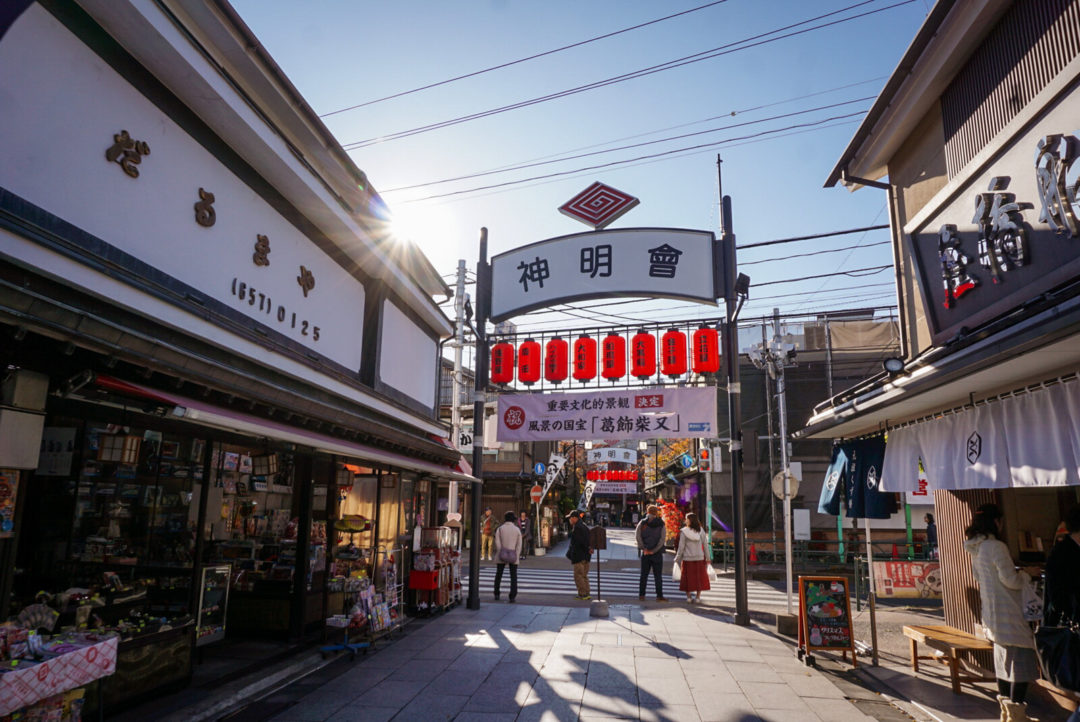









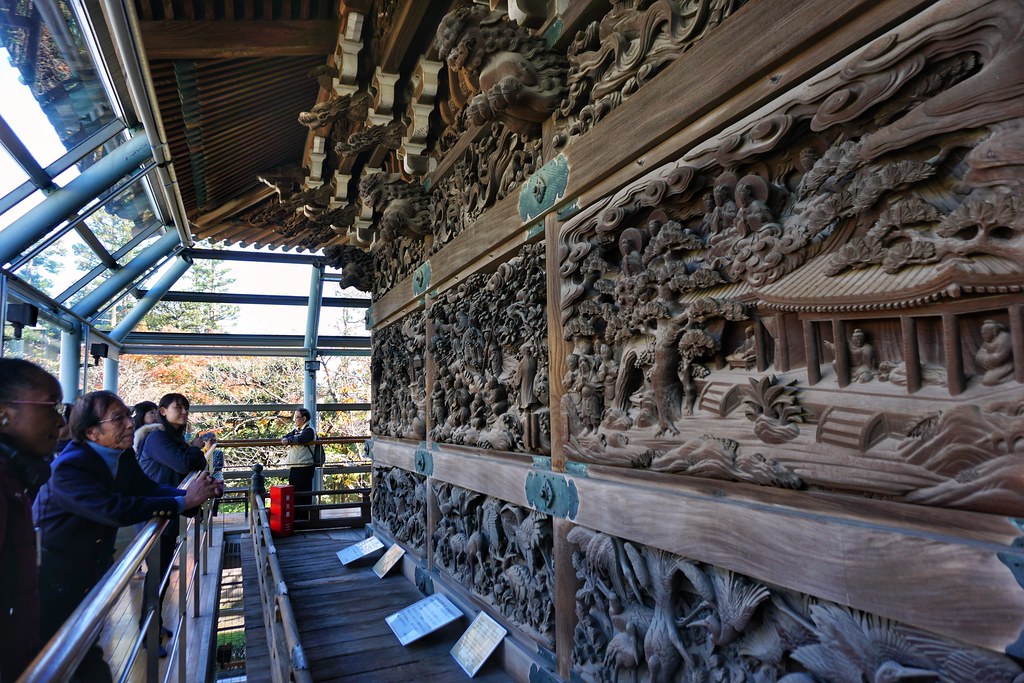


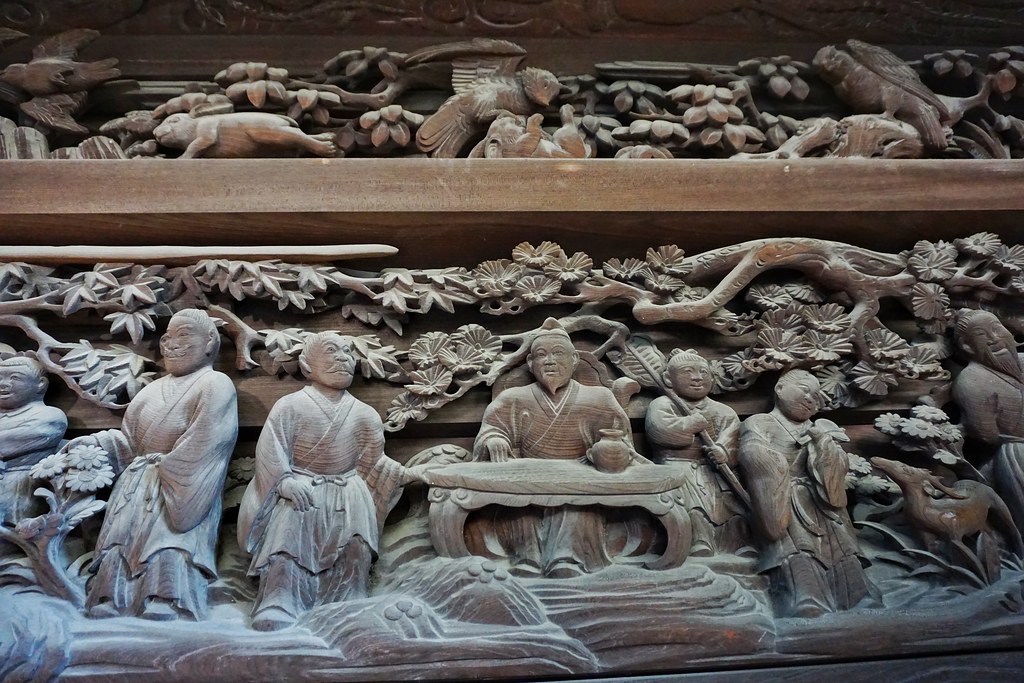
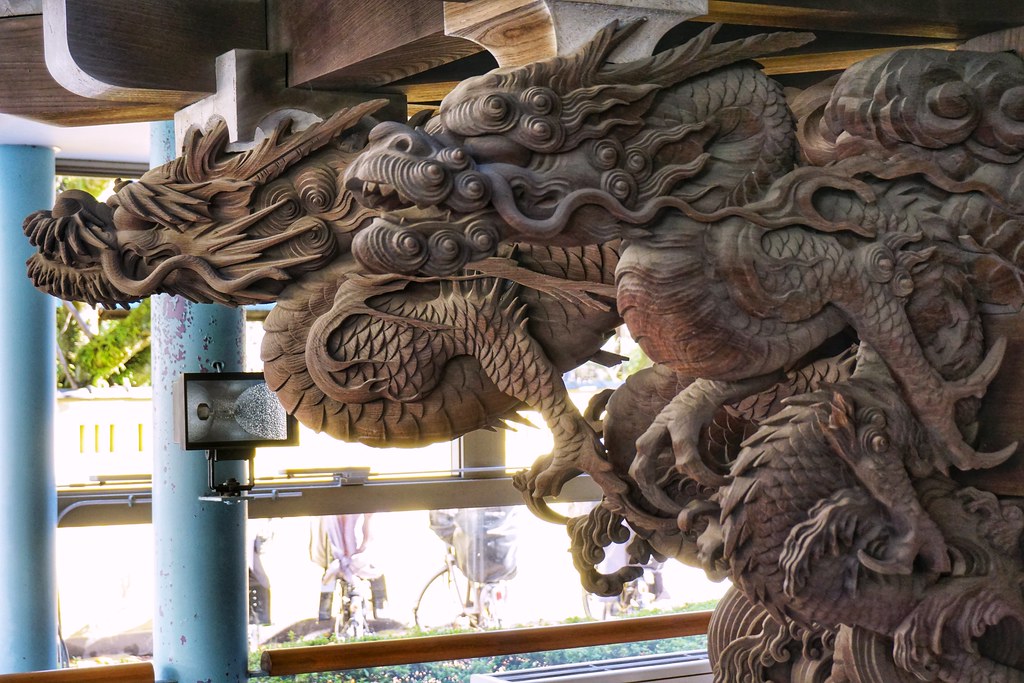


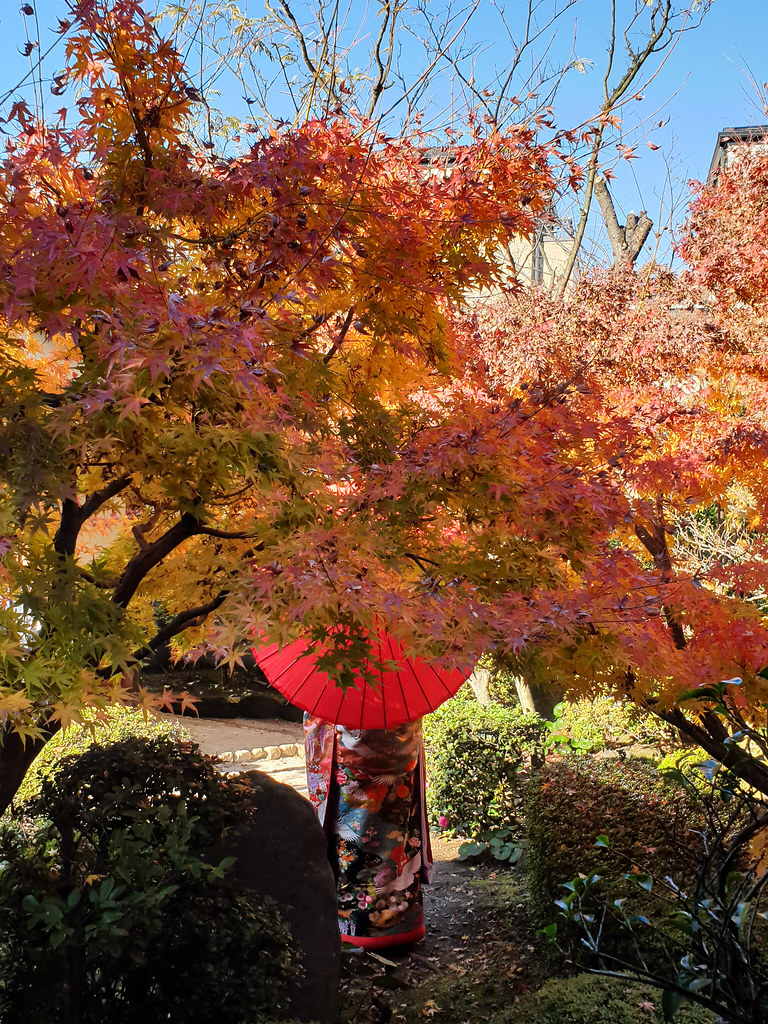


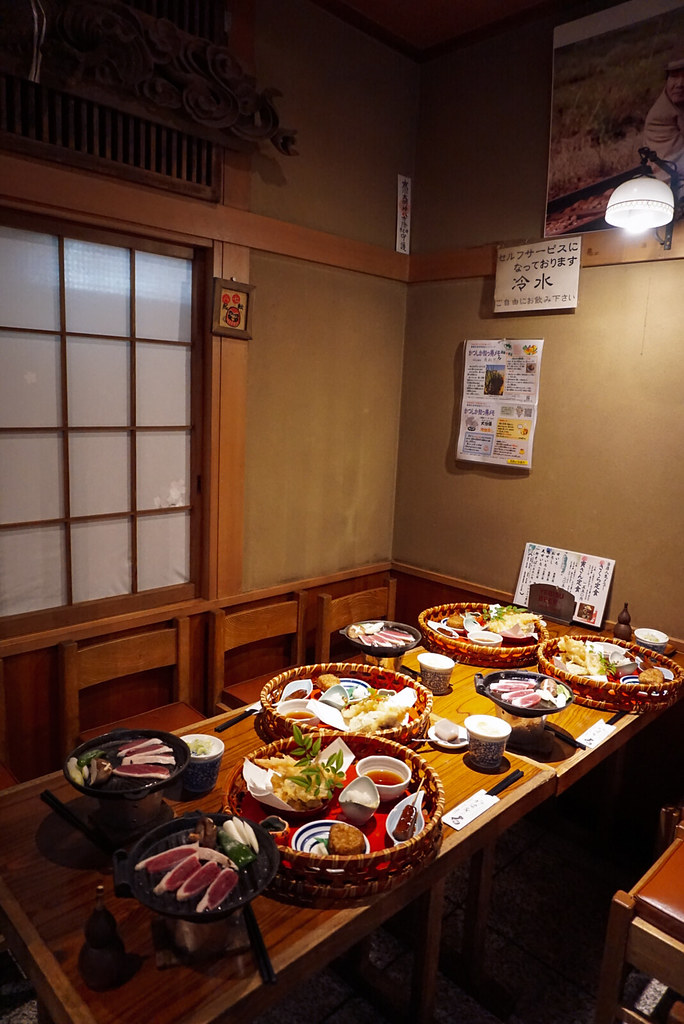



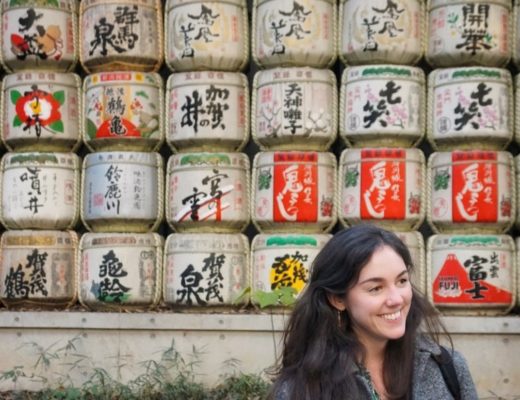
2 Comments
Steven
January 25, 2020 at 12:45 amAnother descriptive view and well written. I’m learning and enjoying your take(and Japan’s) the uniqueness of culture.
Globetrotting Lottie
January 25, 2020 at 10:23 amThose wood carvings are incredible, the Japanese gardens look so beautiful as well.
https://globetrottinglottie.com